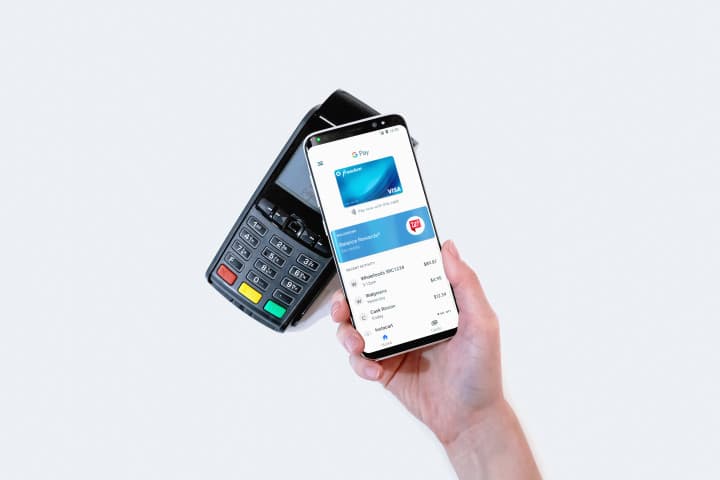A lot of people agree now a days that there are clear advantages to side hustling. Being able to make extra money can not only help your household finances, but it can also help achieve financial independence. To be financially independent, one has to either decrease expenses, or increase income. Side hustling is one way to achieve the latter goal.
Below are several reasons why you should start side hustling and how to succeed at it.
What is a Side Hustle?
First of all, lets start off with defining what exactly is a side hustle. A simple definition of a side hustle would be a way to make extra money in addition to your full time job.

It’s an avenue for you to pursue your passion outside of your 9-to-5 job all the while receiving money for it.
A side hustle Is basically a second job but it has a little bit of flexibility rolled into it rolled into it.
- Maybe you are trying to pay off your student loans?
But you don’t have any extra money.
- Or maybe you are trying to pay off other types of debt that you currently have?
But you don’t have any extra money.
- Perhaps you’re trying to buy a new car?
But you don’t have any extra money.
You only make so much money from your 9-to-5 job and all that money is tied up and allocated for your current expenses.
In order to accomplish those goals above, you have to either reduce your expenses, increase your income, or some combination therein.
I was reasonably surprised when I did some research on reducing expenses and increasing income.
More people put a greater focus on increasing income then they do reducing expenses. This is one of the main reasons that side hustles are such a popular monetary avenue for people.
A side hustle will increase your household income. There is no question about that.
It also does another thing.
That additional income from side hustling will also help you accomplish your goals.
What Kind of Skills Do You Need for Side Hustling?
1. Figure Out What Kind of Side Hustle You Want
When thinking about starting a side hustle is very important to define your vision.
- Do you want some type of side hustle that is just going to be for making fast cash and a quick buck?
- Or do you want a side hustle that is more of a freelance or consultant role?
- Do you have dreams of leaving your 9-5 job someday?
If your answer is the first choice, then there are all kinds of small tasks that you could do.
Making a quick couple hundred bucks a month on the side hustle is still profitable. It can still help you pay off debt and other expenses you may have.
These are just a few examples of what you can do:
- Doing landscaping
- Or make money with surveys online
- House Sitting
- Pet Sitting
I ended up doing a side hustle for one year where I worked one hour a day making $11 an hour and that help me pay off some bills and expenses.
The job itself was a bit mundane, but what I learned about having a second job was worth its weight in gold.
However if you are looking to do more freelance or perhaps start your own business, that would be a different type of side hustle you may want to do.
You would be looking for more of a consultant role and you’re going to have to think a little bit deeper and think about the skills that skill set that may be necessary.
2. Examine Your Current Skills You Possess
Your background and your skill set will become a huge driver on the type of side hustle that you may choose and the path that you may take.

A good place to start examining those skills would be at your 9-to-5 job. That is a skill set that you already know very well. You just need to find a way to freelance those skills to other companies or individuals.
- Do you spend any time doing accounting?
You may be able to do the accounting for a small mom and pop business.
- Do you write up cost projections?
Being an insurance adjuster might work for you.
- Do you create proposals and presentations for your company?
- Do you work in Human Resources?
You could farm out your services to small businesses that need HR support.
- Do you do the bookkeeping for your organization?
You could use those skills to do some type of remote accounting job as a consultant.
- Do you design media and press releases?
If that is the case there are always companies out there that hire freelance marketing executives and they pay big bucks.
- Do you train people?
- Do you do any speaking for your job?
Consider doing some entrepreneurial work as a coach. The personal coaching field is huge and they cover all kinds of areas including personal financial and health.
- Are you a Web Developer or Software Engineer at your day job?
If you are a web developer or software engineer there are all kinds of companies that will hire you per project or per hour. This will be an easy way to make a significant amount of cash with side hustling. Some of these skills are very much in demand. You won’t have any problems finding a side hustle in this field.
If you have any of the above skills at your day job, you can see why it is so important to keep your day job. By working your day job while side hustling, you can use these skills you already know to branch out on your own.
Additionally, you can also stay current with these skills at your day job while employed there.
Maybe your employer will send you for training and pay for certifications related to your job.
Not only does this benefit your role at your day job, it also benefits you personally as well side hustling.
You can use that expertise and knowledge base and make money for yourself or your business as people will look at you as an industry expert.
3. Problem-Solving Skills At Your Job
Let’s face it, at every single job there is always bound to be a problem of some type.
Examine your current job and look at the areas where you are good at solving these problems. They may include:
- What kind of problems are there that I solve?
- Are there certain types of problems people come to see me about for advice on?
- Are these problems related to a specific task or is it a much bigger problem that exists within my organization?
- Is it always the same problem that people come to see me about or are there other problems?
- Have I set up my own procedure for solving these problems?
- Can others at my job solve this problem the same way as I do or no?
Maybe you are very good at writing grant proposals. A lot of nonprofit companies will pay a grant writer anywhere from $500 upwards to $10,000 for a written grant proposal.
Or maybe you have found ways to save the company money. Determine if there is a way that you can package your problem solving skills into a packet and sell it to organizations.
If you can offer a basic proposal of your solution and it helps solve problems for people, there is definitely a market for your services in corporate america.
4. Off The Radar Skills
I like to call this personal skillset the “off the radar skillset.” These would be skills that you possess but may not be aware of them.
Have you ever had a coworker or somebody come up to you and say:
“Hey Bryan you are really good at organizing our ideas and writing these lists.”
While you may consider it just part of your normal job duties, to some people this can be a really hard task to do. As silly as it sounds, a lot of people cannot take their thoughts that they have and organize them.

It is very hard for them to create concise and constructive goals from those ideas and transfer them down on paper.
Writing out a clear and concise path and setting goals would be a great way to start freelancing.
You could start doing corporate retreats or teach classes how to write strategic plans.
There are all kinds of creative ways to make money with side hustling.
All of these skills could translate into marketable clients.
Once you get enough clients established, you could very well leave your 9-to-5 job and work of your business.
What Is A Good Side Hustle To Start?
A good side hustle is one that is easy to start and offers a lot of flexibility. Some of those would include:
- writing social media and management
- website creation
- selling products
- Starting a Blog
For my last side hustle, I ended up working in social media.
Prior to that I was a Realtor and I worked with clients.
I spent most of my time outside of my 9-to-5 job working this side hustle. The thing with real estate is you are working a lot when other people are not.
So, it can be a good side hustle to do while still working your day job.
Most of your time will be filled by with working clients after they are done working and showing houses when it is convenient for them.
Real Estate is a good field to work in because there are a ton of flexible jobs out there that could work for your situation.
And for some of those, you could earn well over $100,000.
How Do I Know If It Is A Good Side Hustle To Start?
Finding the perfect side hustle in my opinion has a lot to do with flexibility. Being able to work in a second job into your schedule is what makes side hustling so appealing.
More often than not, you will not need a full day for your side hustle. You just have to find the time to do it.
When I was working in social media as my second job side hustle, I would get up very early in the morning. I will grab a cup of coffee put the news on and start doing my side hustle.
This was pretty much my day to day schedule and I made over $4,000 doing it watching the news and drinking a cup of coffee.
If it’s a good side hustle, it won’t even impact the daily routine of your life. As you can see from mine, aside from getting up early, my daily routine was not impacted at all.
What About Side Hustle Burnout?
Yes, side hustle burnout is a real thing. Working from 9 to 5 during the day and then coming home late at night and most of your weekend time to do your side hustle is definitely draining.
Here are some tips on what to watch out for so it doesn’t happen to you.
1. It’s All In The Schedule
Scheduling is the key to success at side hustling. You know when you work best. For me, I always seem to do my heaviest work during morning hours. I am a morning person, no question about that.
Try to take advantage of that time when you work best and multitask as best you can. Look for downtime within your day job and try to complete tasks that need to be done for your side hustle.
2. Modify Your Schedule If You Can
Maybe your day job offers flexible working hours. Try to take advantage of that and see about working for 10 hour days. That way you’ll get one full day off every week to work on your side hustle.
- Does your day job allows you to work from home?
Get up a couple hours earlier or work a couple hours later in the evening. Additionally, all of that time saved in commuting could be put towards your side hustle.
3. Recharge Your Batteries
Every now and then the human body does require rest. Try to work times into your weekly schedule where you are either resting or doing some leisure activities.
You don’t want to keep working and burning both ends of the candle.
It’s not good for your health first and foremost.
Second, your work may also suffer at your day job and also at your side hustle. You need to watch out for this trend and take some downtime.
4. Don’t Work For Peanuts
When you are first starting out and trying to build a business portfolio, you might often take jobs that pay very low.
This is a good thing to do to gain experience and build a clientele list.
But over time as you gain more clients and your workflow increases, you will have to weed out the side hustles where it’s just not worth your time.
Focus on a high return on investment (ROI) to make side hustling worthwhile.
5. Write A Weekly Task List
Writing a weekly task list for both your 9-to-5 job and your side hustle job is very smart thing to do. This is a great way for you to manage all of your workflow for both jobs.
By seeing everything that week written out on paper, you have a visual workflow map. That map will help you multitask and focus on what to work on throughout the week.
It will also be a visual aid that will help you prioritize the things that need to be done and what time periods you should do those tasks.
I write out a weekly task list and find myself to actually have increased efficiency in what I get done for that week.
6. Love The Game
The bottom line is you have to really love what you’re doing. If it’s a side hustle that you really enjoy and that you are gaining a benefit from, then you will be able to find a way to make it work.
You will find a way to overcome all of your challenges and succeed at it.
Side Hustling…Is It Right For You?
You will have to be the one to answer that question. However, all of this information and content provided should assist you in answering that question. By taking a look at your skills that you already possess, you should be able to come up with some potential side hustles.
Determining if those jobs might work will depend on a whole host of factors such as pay, flexibility, and opportunity to make your life better.
Hopefully, with the tips above you will be able to succeed and are convinced that there is no better time than to present to start.
Working a side hustle will change your life in many ways.
As long as you keep an eye out for burnout, your life and finances have nowhere to go but up.




Leave a Reply